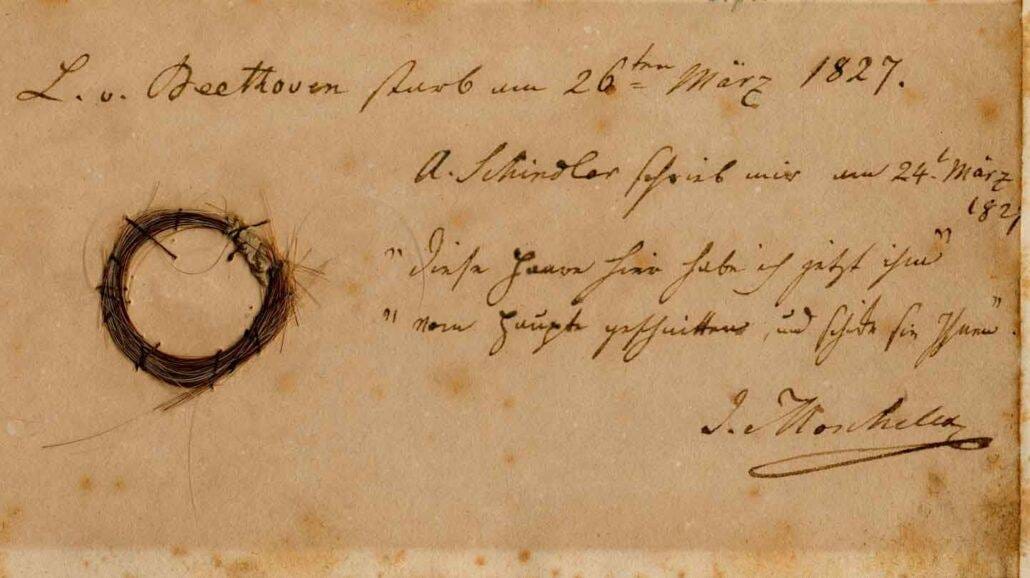DNA extracted from Beethoven’s hair revealed the secrets of this composer’s death

Beethoven suffered from various illnesses throughout his life. A new genetic analysis helps uncover the cause of some of his diseases.
Beethoven spent most of his life struggling with health problems. On March 26, 1827, he left the world due to what many historians believe was liver failure, while he was leading his apartment in Vienna.
According to Science News, analysis of several of Beethoven’s hair strands obtained by his relatives and collected by collectors show that Beethoven had several genetic risk factors for liver disease. According to Kristen Beg, a biological anthropologist at Cambridge University, this high risk (along with possible liver infection and his drinking habits) may have led to Beethoven’s early death at age 56.
The professional life of Beethoven was shortened due to progressive hearing loss, which made this composer completely deaf at the age of 45. Beethoven also suffered from digestive and liver problems. It is believed that liver failure was the cause of this composer’s yellowing of the skin in 1821.
The main reason for the many health problems that Beethoven suffered from has been interesting for many people. But discovering what diseases afflicted a man who lived almost two centuries ago is not easy. Researchers have had to rely on notes from two autopsies of the composer after his grave was opened in 1863 and 1888, as well as other historical documents. Although clues may be hidden inside Beethoven’s DNA. So far, DNA has only been analyzed for several historical figures such as Richard III of England.
Carles Lalueza-Fox, a paleontologist at the Institute of Evolutionary Biology in Barcelona who was not involved in the study, says these genetic repositories can offer information that no post-mortem examination after two hundred years can offer.

Scientists used five strands of hair collected throughout Beethoven’s life to reconstruct the genome of the composer. The Muschelish strand (seen here) was taken around the time of his death in 1827.
In 2014, Beck and his colleagues decided to reconstruct the genome of the bat. For this, the team needed a piece of the composer themselves. Fortunately, about 30 separate hairs belonging to Batoon were available to collectors and descendants of those who first received these hairs in the 19th century.
Beck collaborated with enthusiasts of Batoon to ask hair owners to put a few strands of hair for them to study. The successful team obtained samples of eight hairs that were said to have been arranged from 1821 to 1827.
One of the hairs did not provide enough DNA for analysis. Two hairs did not belong to the baton. Researchers found that one of them belonged to a woman with Ashkenazi Jewish ancestry. However, five hairs that came from different sources clearly belonged to a single individual with Central European ancestry who was also with Batoon. Natural degradation of DNA over time in these hairs also matched with hair dating back to the early 19th century. These common features, along with clear records of ownership of these hairs over centuries, convinced Beck that they belong to Batoon. Lalouza Lalouza Fox agrees with this as well. He says, ‘I think they provide convincing evidence that these five samples belong to the baton.’
Researchers used well-protected hair strands to reconstruct the composer’s genome. The analysis did not reveal any genetic indicators associated with deafness or intestinal problems. However, several risk factors for liver disease were identified. One of these risk factors was a variant of the PNPLA3 gene that tripled the risk of liver problems throughout the composer’s life.
Of course, these risk factors alone should not have caused Beethoven’s death. Scientists also found traces of Hepatitis B virus in one of the strands of hair collected shortly after Beethoven’s death. This is a virus that harms the liver.
According to the researchers, the risk of Hepatitis B infection for the liver is exacerbated by alcohol consumption. Some contemporaries have claimed that this composer drank heavily throughout his life.
Yan Gilmore, a liver disease expert at the Royal Liverpool University Hospital in England who was not involved in the study, says that while we don’t know exactly what combination of factors caused Beethoven’s death, this story is an interesting detective story that raises new questions: The Y chromosome does not match in five hair samples with the 5th chromosome of individuals who share a common ancestor with Beethoven from the 14th century (this composer did not have any known children). This may indicate the inauthenticity of the hair or, as Bjg puts it, probably one of Beethoven’s direct ancestors on the paternal side had a child outside of marriage, probably between the 14th and 16th centuries.
This research has been published in Current Biology journal.


